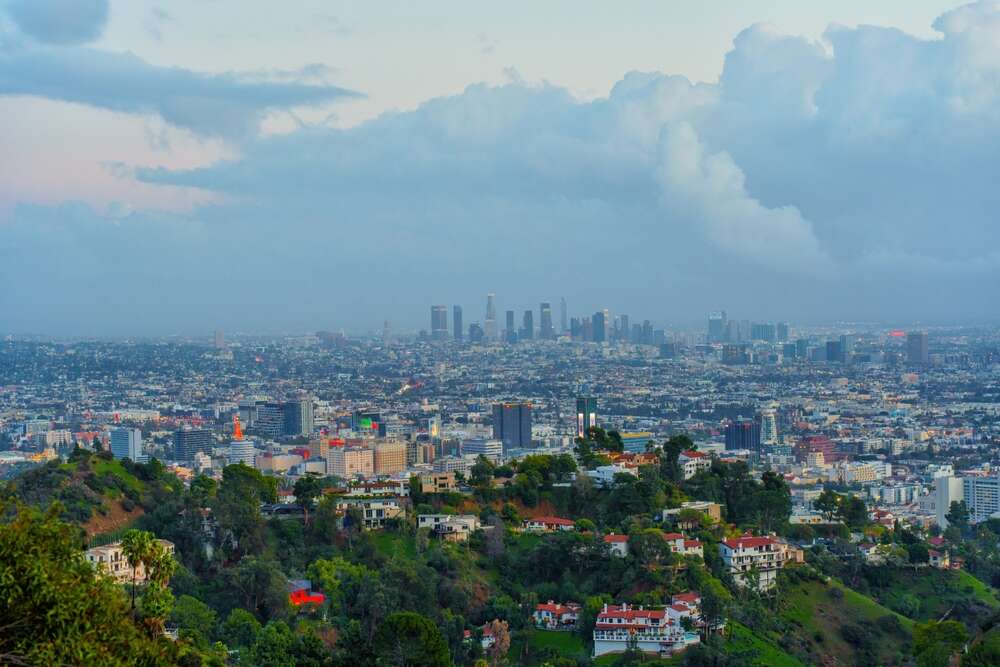
In the wake of Climate Week NYC, Mayor Karen Bass unveiled a series of strides towards a greener, more sustainable Los Angeles. These initiatives look to underscored her commitment to combat climate change and safeguard the city against its disruptive impacts.

Bass outlined a multifaceted approach aimed at electrifying transportation, reducing greenhouse gas emissions, and fostering sustainable energy efficiency in both residential and commercial buildings.
City Monitor looks at what was revealed.
Electrifying a sustainable transportation system
One of the achievements was the launch of the first 100% electric full-size street sweeper in the US this August. This move is part of a broader strategy that includes the installation of nearly 100 Level 2 chargers and 12 Fast Chargers across the city, making EV charging accessible and convenient. As a result, more than a quarter of new cars sold in Los Angeles County are now electric vehicles, showcasing a growing commitment to cleaner mobility.
The Los Angeles Department of Transportation (LADOT) has also made strides, introducing 18 electric DASH buses throughout the city this year, with plans for continued expansion. Furthermore, the city is set to establish a 100% public EV truck charging depot at the Port of Los Angeles by 2025, bolstering its commitment to sustainable freight transportation.
Increasing energy affordability with sustainable energy efficiency and cleaner buildings
Bass and the Los Angeles Department of Water and Power (LADWP) have spearheaded various programmes aimed at making energy efficiency and sustainability more attainable for all residents. The Comprehensive Affordable Multifamily Retrofits (CAMR) Program, which supports low-income multifamily property owners, has more than 100 projects and 9,500 housing units in the pipeline. These initiatives focus on expanding energy efficiency and deploying local solar installations, promoting both environmental sustainability and affordability.
To combat the escalating impacts of extreme heat due to climate change, LADWP has relaunched the Cool LA programme, offering rebates to help residents, particularly older adults, income-qualified families, and underserved communities, manage extreme heat with nearly 5,000 AC units and over $1.1m in rebates.
The Zero by Design construction programme, which promotes high-efficiency buildings in commercial and high-rise residential projects, highlights the city’s commitment to sustainable urban development. Additionally, LADWP is investing $4.6m in community emission reduction grant programmes to fund projects such as cool roofs, solar arrays, and electric vehicle charging stations, amplifying the city’s efforts to reduce emissions.
Progress towards 100% clean power
LADWP has become the first municipal utility to establish science-based targets for greenhouse gas reduction. By applying for approximately $825m in federal funding, the city is determined to expedite its transition to sustainable, clean energy sources, particularly in transportation, power generation, and building sectors. The completion of six major transmission infrastructure upgrades is expected to enable Los Angeles to import more renewable power, reinforcing its commitment to sustainable energy generation.
Los Angeles continues to excel in solar energy adoption, with the addition of 35MW of rooftop solar power this year, bringing the total to an impressive 665MW. This figure is equivalent to 77,000 homes and businesses participating in LADWP solar programmes, solidifying the city’s position as a leader in solar energy.
Moreover, the launch of the Commercial Energy Storage 2 Grid (CES2G) Pilot programme allows for large energy storage and electric vehicle owners to provide essential energy storage services, contributing to grid resilience.
LADWP’s ongoing Green Meadows project is set to serve as a community resiliency hub in Watts, featuring solar installations, energy storage facilities, and EV chargers. The project aims to enhance grid resiliency and provide a cooling centre during heat storm events, with an anticipated completion date in August 2024.
[Read more: Nobody walks in LA? Think again.]






